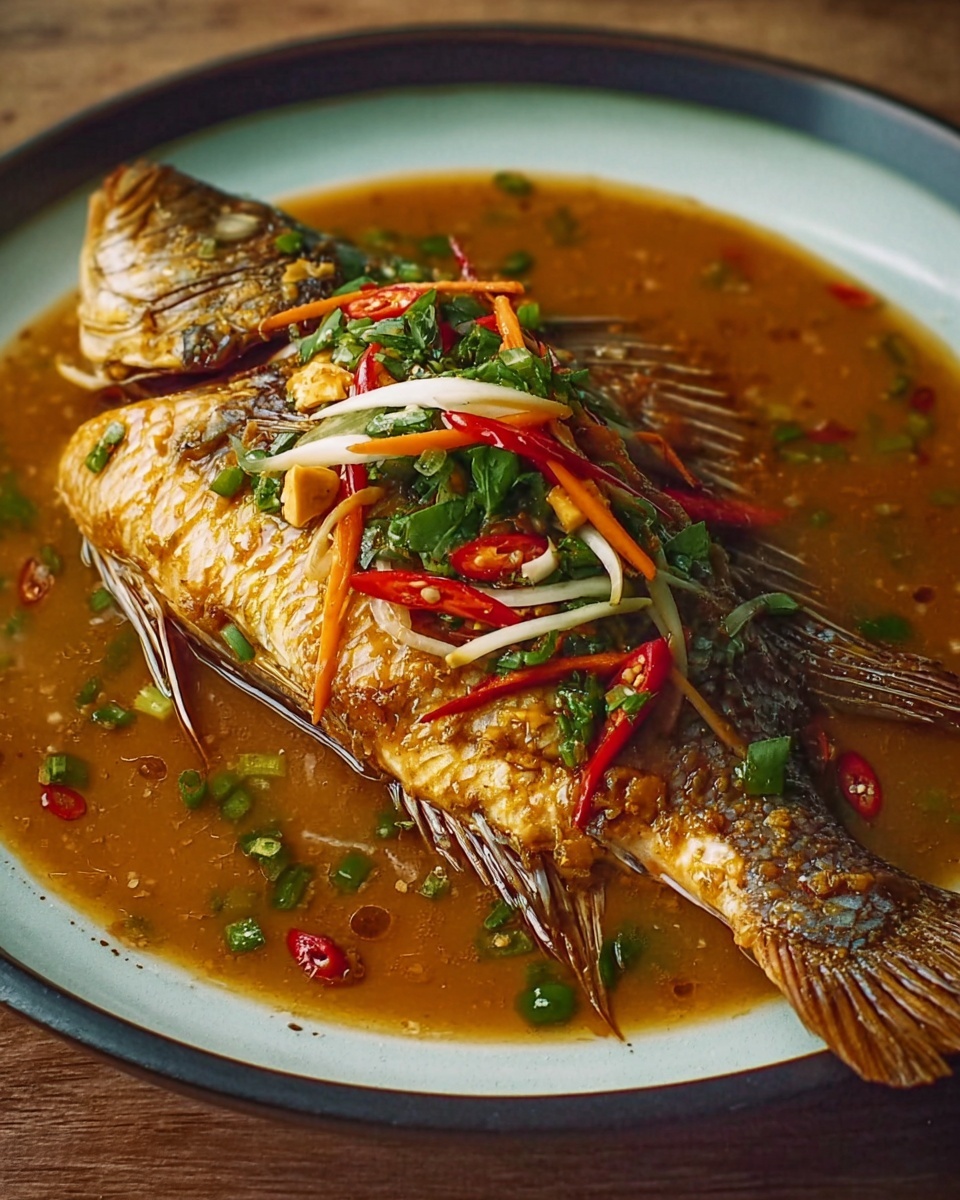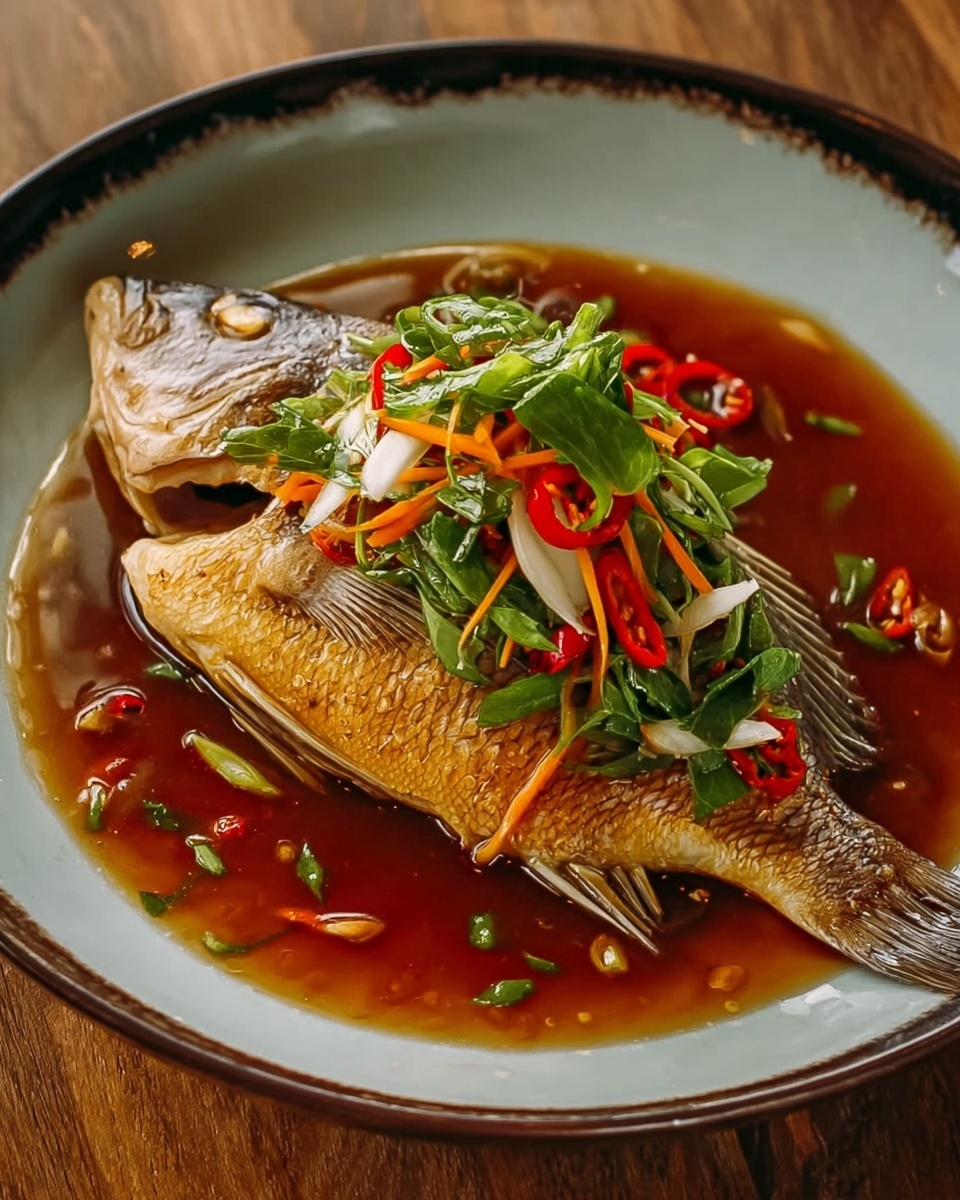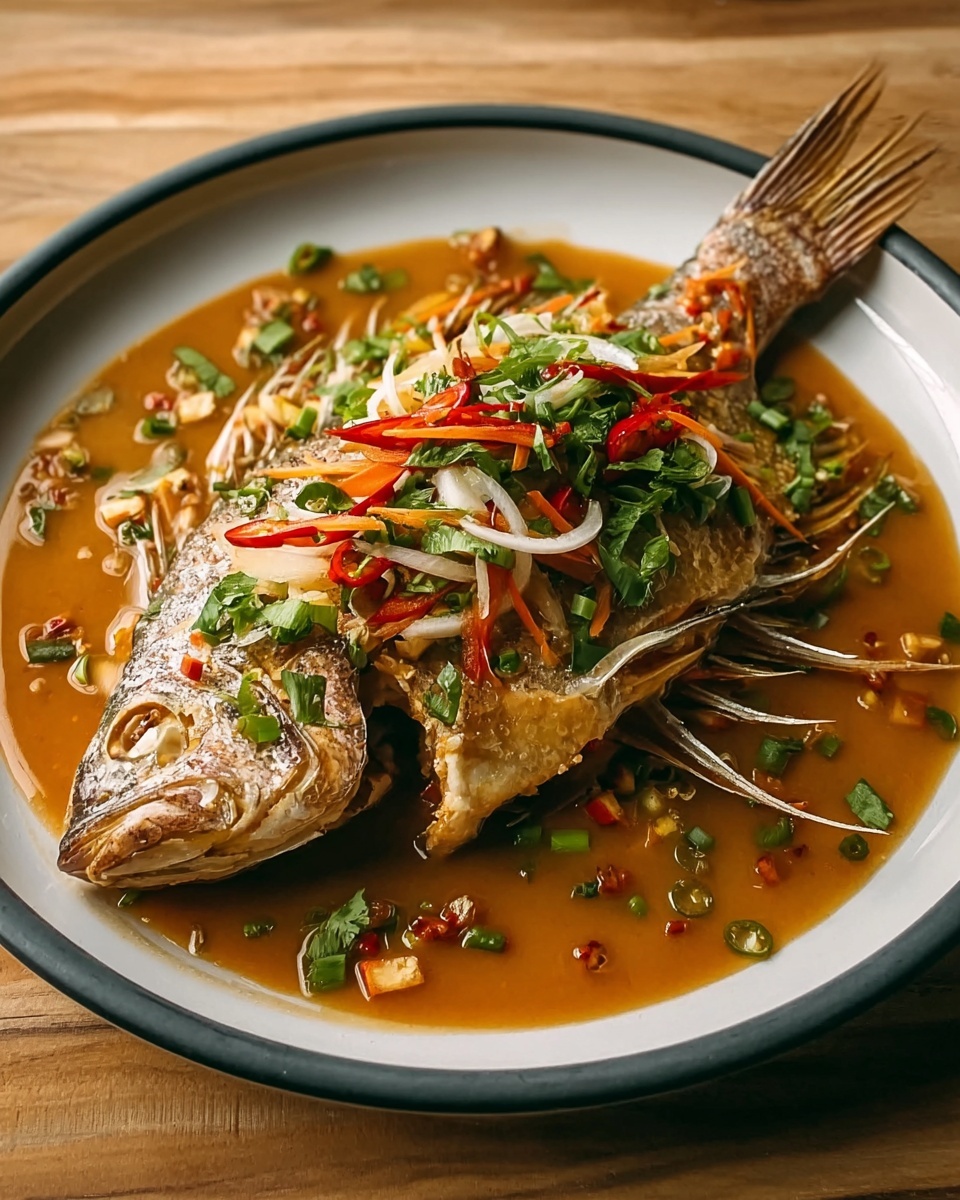If you are looking to bring a timeless, fragrant, and incredibly tender dish to your dinner table, this Chinese Steamed Fish Recipe is exactly what you need. Perfectly balancing delicate flavors and vibrant aromatics, this dish showcases the natural sweetness of fresh fish enhanced by ginger, scallions, and a light soy-based sauce. It’s a simple yet elegant meal that feels comforting and celebratory at the same time, making it a beloved classic in Chinese cuisine and a personal favorite that never fails to impress.

Ingredients You’ll Need
The beauty of this Chinese Steamed Fish Recipe lies in its straightforward ingredients that work together to create a harmonious flavor profile. Each element is essential in contributing to the texture, taste, and presentation of the dish, ensuring that every bite is delightful and fresh.
- 1 whole fish (such as sea bass, tilapia, or red snapper): Choose a fresh, whole fish for the best flavor and presentation.
- 2 tablespoons soy sauce: Provides savory depth and a touch of umami to the seasoning.
- 1 tablespoon rice wine or dry sherry: Adds subtle sweetness and complexity to the fish.
- 1 teaspoon sesame oil: Infuses the dish with a nutty aroma that complements the fish beautifully.
- 1/2 teaspoon sugar: Balances the saltiness and brightens the overall flavor.
- 3 slices ginger, julienned: Adds a zingy, fresh bite that cuts through the richness.
- 2 scallions, sliced thinly (whites and greens separated): The whites introduce mild oniony notes, while the greens provide a fresh garnish.
- 1 red chili, thinly sliced (optional, for garnish): Brings a pop of color and a gentle heat if you like a little spice.
- Cilantro leaves (optional, for garnish): Adds a bright, herbal freshness that livens up the dish.
How to Make Chinese Steamed Fish Recipe
Step 1: Prepare the Fish
Start by rinsing your whole fish thoroughly, making sure to clean both the inside and outside. Pat it dry carefully with paper towels to ensure the seasoning adheres well. Scoring the fish on both sides is an important step—it allows the heat and flavors to penetrate evenly, guaranteeing perfect doneness and maximum taste absorption.
Step 2: Season the Fish
Place your fish on a heatproof plate or shallow dish that will fit snugly inside your steamer. Evenly sprinkle the soy sauce, rice wine, sesame oil, and sugar over the fish. This combination creates a savory, slightly sweet marinade that embraces every inch of the fish, setting the flavor foundation for a delightful dish.
Step 3: Add Aromatics
Top the fish with the julienned ginger slices and the white parts of the scallions. These aromatics infuse the fish while it steams, imparting a fresh and slightly pungent flavor that elevates the dish beyond a simple poached fish.
Step 4: Steam the Fish
Bring a pot of water to a boil and arrange the plate or dish inside your steamer basket so that it sits above the water. Make sure the liquid does not touch the fish directly. Cover the steamer tightly and steam the fish for 8 to 12 minutes, depending on its size and thickness. You’ll know it’s perfectly cooked when the fish turns opaque and flakes easily under a fork.
Step 5: Serve Immediately
Carefully remove the fish from the steamer to avoid breaking the delicate flesh. Garnish with the green parts of the scallions, thin slices of red chili for a touch of heat and color, and cilantro leaves if you like that refreshing herbal note. Pour some of the steaming liquid over the fish to keep every bite moist and flavorful.
How to Serve Chinese Steamed Fish Recipe

Garnishes
Garnishing is where you can add your personal flair and brightness to this classic dish. Fresh scallion greens add a crisp, mild onion flavor while the red chili slices provide a vibrant splash of color and optional heat. Cilantro leaves refresh the palate with their clean, citrusy notes. Each garnish not only enhances appearance but also rounds out the flavor beautifully.
Side Dishes
This dish shines when paired with simple yet complementary sides. Steamed jasmine rice or sticky rice is a natural choice to soak up the savory sauce. You might also serve sautéed greens like bok choy or Chinese broccoli to add a crunchy texture and balance the silky fish with freshness.
Creative Ways to Present
For a special occasion, place the fish on a large platter lined with lotus leaves or banana leaves to add an extra layer of aroma and presentation. Alternatively, serve individual portions on smaller plates with a drizzle of hot oil poured over just before serving for an enticing sizzle and boost of flavor.
Make Ahead and Storage
Storing Leftovers
If you happen to have leftovers, store the fish in an airtight container in the refrigerator. It’s best consumed within 1 to 2 days for optimal freshness and texture. Keep the sauce and garnishes separate if possible to maintain their brightness.
Freezing
While steaming is best enjoyed fresh, you can freeze leftover fish by wrapping it tightly in plastic wrap and then placing it in a freezer-safe container. However, the texture may change upon thawing, so it’s advisable to consume frozen steamed fish within 1 month.
Reheating
To reheat, gently steam the fish again, using low heat to avoid drying it out. Alternatively, warming it in a microwave covered with a damp paper towel can help retain moisture. Avoid overcooking to keep the delicate, flaky texture intact.
FAQs
Can I use fillets instead of a whole fish?
Absolutely. Fillets will cook more quickly and are easier to handle, but a whole fish ensures more even cooking and a beautiful presentation. If using fillets, adjust steaming time accordingly, usually 5 to 7 minutes.
What kind of fish is best for this recipe?
Sea bass, tilapia, and red snapper are excellent choices due to their firm flesh and mild flavor. Whatever fish you choose, freshness is key for the best taste and texture.
Is it necessary to use a steamer basket?
While a steamer basket is ideal for evenly cooking the fish with moist heat, you can improvise by placing the plate on a rack inside a pot with boiling water, covered tightly with a lid or foil.
Can I make this recipe without rice wine or dry sherry?
If you don’t have rice wine or dry sherry, you can substitute with a mild white wine or simply omit it. The flavor will still be delicious but slightly less complex.
How do I know when the fish is perfectly steamed?
Check if the fish flakes easily with a fork and has turned opaque throughout. Overcooking will make the fish dry, so keep a close eye on cooking time based on your fish’s size.
Final Thoughts
This Chinese Steamed Fish Recipe is a wonderful way to celebrate fresh, simple ingredients while making a dish that feels special and heartwarming. Whether you’re cooking for family or impressing friends, its vibrant flavors and silky texture make every meal memorable. Give it a try—you might just find a new favorite to add to your culinary repertoire.







